Dear Little Honey Locust,
I am so sorry about the deer. We didn't put a fence around you, thinking you had already proven yourself the toughest of survivors.
First, you took root in our flower bed, right under the bird feeder, hidden among the prairie natives, and you managed to grow to three feet high....
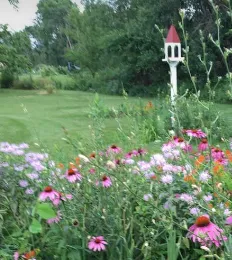
Sorry, I cannot find a close-up or any glimpse of you in your baby photos!
And you survived the historic 2020 derecho that swept from Omaha to Indiana, taking down seedlings, saplings, mature trees, and mighty oaks by the thousands. You held firm.
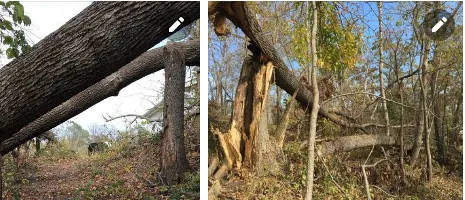
To replace one of our lost apple trees, we transplanted you from that flower bed to an empty spot nearby. Sorry, you're not visible in this photo either. Note to self: document more plants in progress.
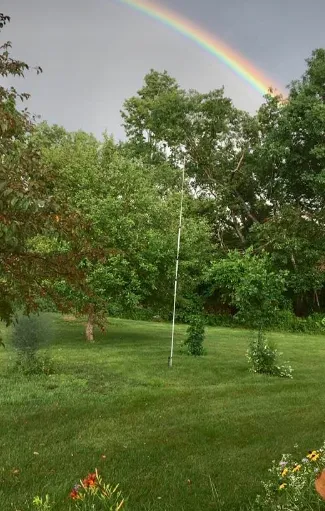
Transplant Shock
left you leafless and had us thinking you were dead, but I kept watering you anyway, five gallons a day the first week, then five gallons a week thereafter, from April to August. We pruned you and watched your leaves come back and marveled at how you'd survived so much.
Then came the deer in the night.
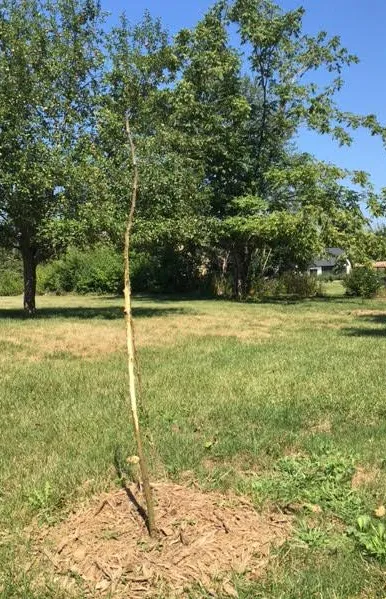
I have no words...
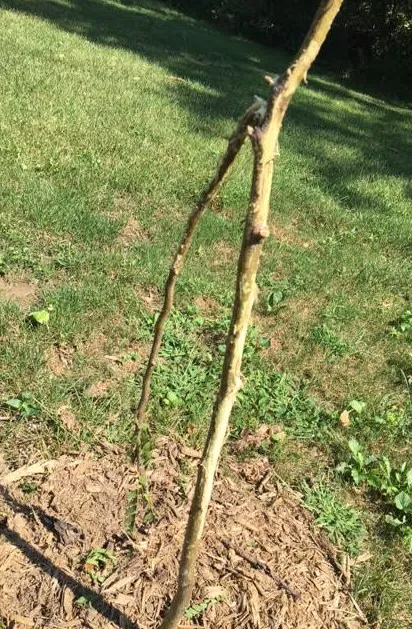
Why did the deer choose you, not the persistent mulberry, not the basswood, which I hack down several times a year from their poor choice of a location, inches from the foundation of the house?
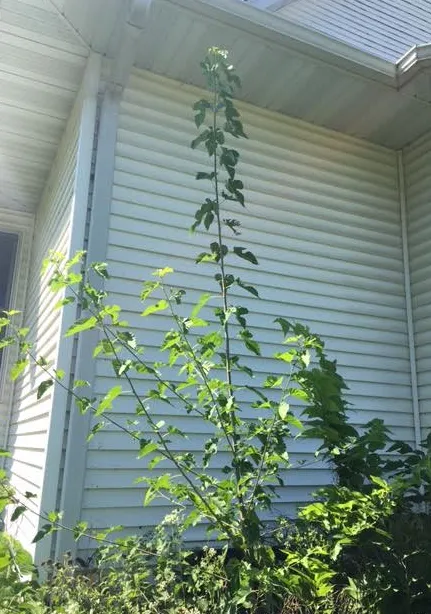
Sad, sorry, broken little locust,
I had so much faith in you. It's not your fault you tempted the deer. I should have protected you. Hubris! You had shown yourself so stalwart, I somehow felt confident you were here to stay. It's not as if the deer didn't have hundreds of other seedlings to pick from among the smorgasboard of our yard.
Transplant Shock. Epic Storms. Nature's worst turned out to be....hungry deer!
On the bright side, if there is one, maybe you were actually a black locust, not a honey locust, and the deer did us a favor by taking you down. It's not much of a consolation.
Don’t Plant Black Locust Trees
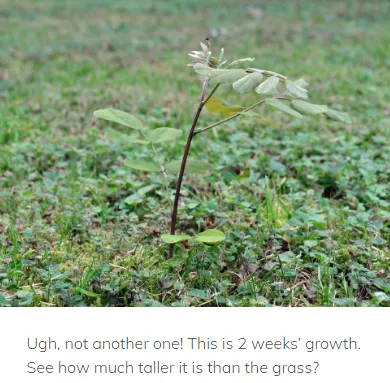
I would flunk botany. I'm not at all certain now you were a honey locust! I am certain, though, that you were one tough little tree, and I am sorry to bid you farewell.
Locusts are part of the pea family, Fabaceae, and can take the form of both trees and shrubs. They are all native to regions across North America, where they have since been cultivated for multiple reasons, including for use as hedging or erosion control.
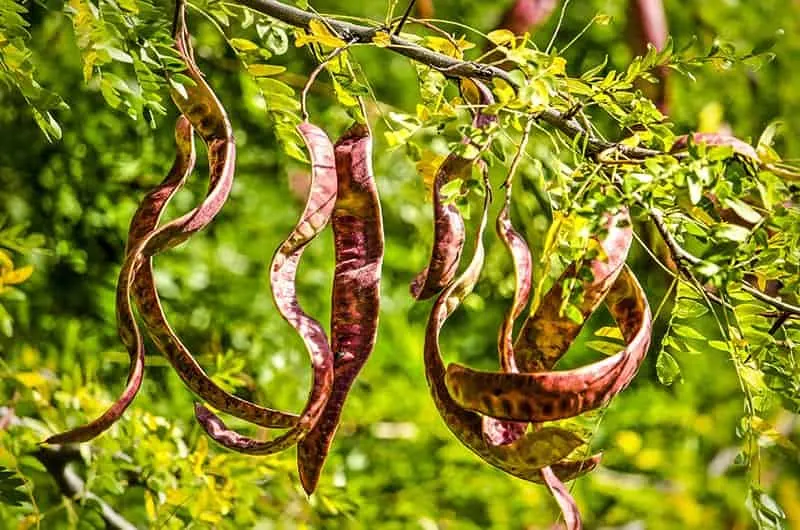
The honey locust tree is popular in landscaping due to its large size, which is achieved in a short space of time because the tree is fast-growing. Reaching heights of 100 feet in the wild, this tree will typically grow to between 40 and 70 feet when cultivated. It has a wide spread that provides useful shade in park grounds. 8 Different Types of Locust Trees & Their Uses
This is my entry to @riverflows heartwarming Email To A Tree Contest.
Please DO share this post and tag people you think would do a great entry (@trucklifefamily and @buckaroobaby, I'm looking at you!) - my offer of 20 HIVE is only valid for 5 posts or more, to be fair - so the more the merrier! And I'm always a bit generous for awesome writing, so don't be suprised if I throw a little more at really good entries! Be amazing!
Thank you @riverflows, and
Thank you @owasco
for tagging me on this in your own entry, Email To My Favorite Tree.
